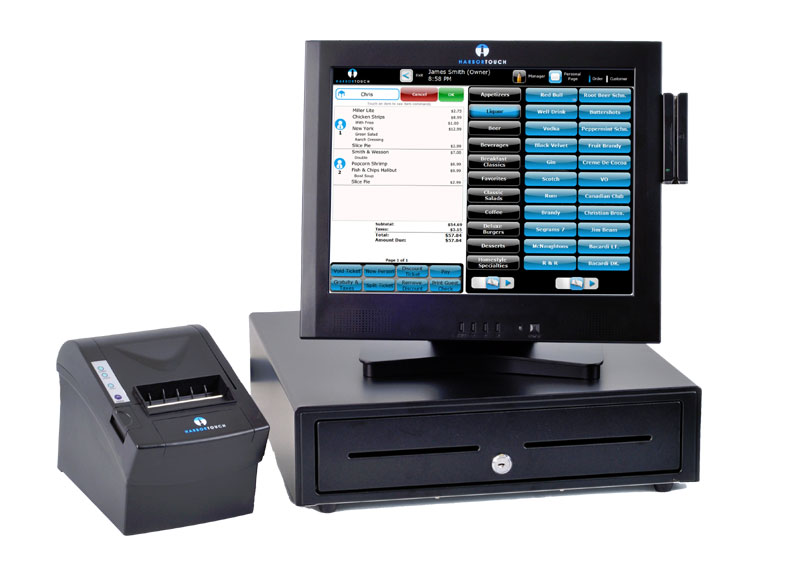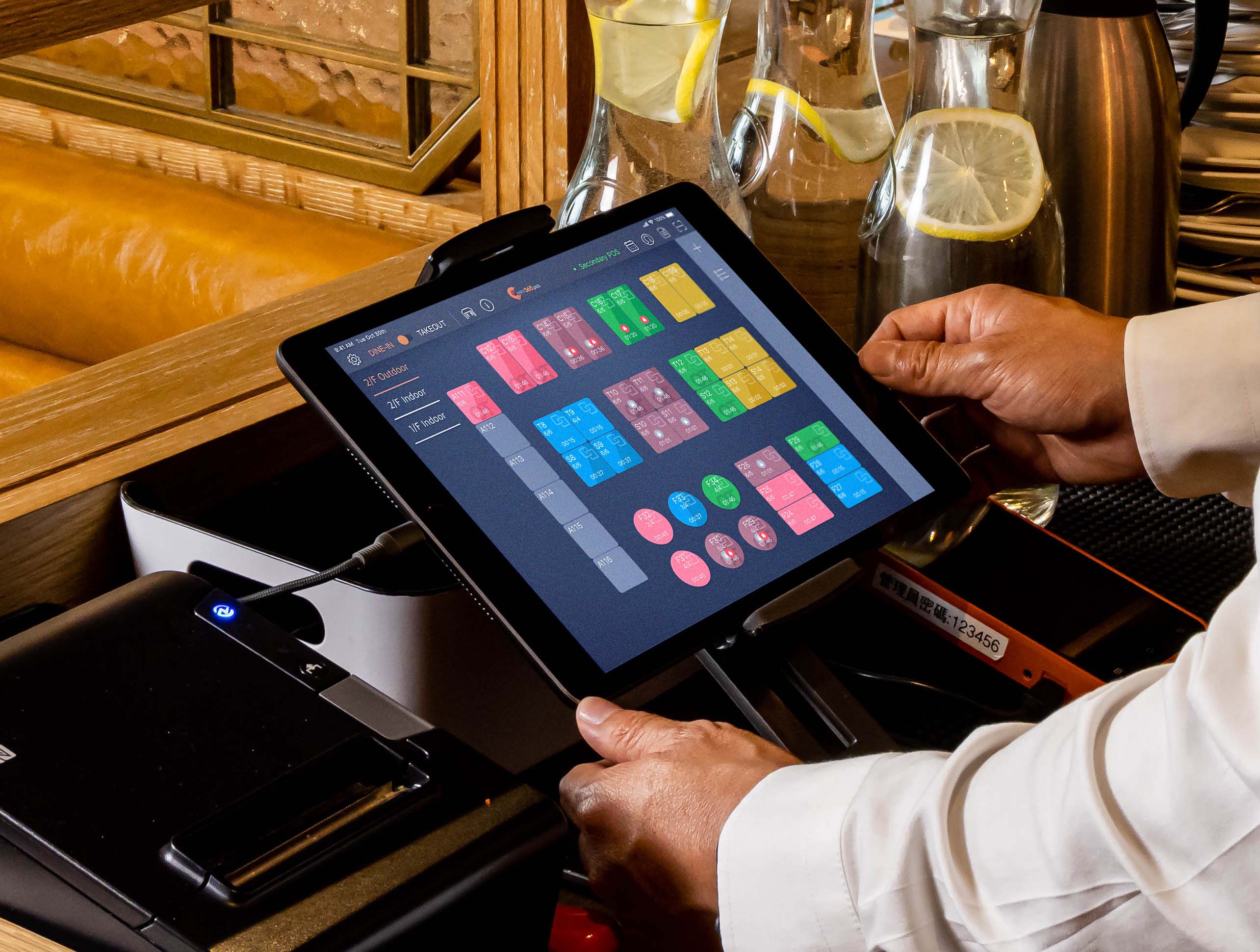Restaurant POS Software tools with built-in rewards programs that retain customers
Wiki Article
How POS System Works: A Comprehensive Guide for Entrpreneurs
A POS system functions as an essential device for modern companies, integrating various components to improve operations. It incorporates hardware like barcode scanners and software program offer for sale monitoring. This system not just processes transactions yet additionally handles inventory and assesses customer behavior. Comprehending its functionality can significantly impact a business's effectiveness and decision-making. What are the essential aspects that add to this effectiveness? Exploring these components provides important insights.Understanding the Elements of a POS System
A Factor of Sale (POS) system is composed of numerous essential elements that collaborate to help with purchases and manage business procedures. At its core, the hardware consists of devices such as a money register, barcode scanner, receipt printer, and settlement terminal, all necessary for processing sales (Restaurant POS Software). The software part manages stock, sales tracking, and client information, supplying useful insights for business decisions.Additionally, databases keep transaction records and client details, making certain data integrity and safety and security. Network connection enables real-time updates and access to cloud-based solutions, improving functional effectiveness. Interface, designed for convenience of usage, allow staff to navigate the system rapidly, reducing training time. Together, these elements produce a cohesive system that simplifies the sales procedure, improves customer care, and aids in reliable monitoring of business sources. Comprehending these parts is crucial for entrepreneur looking for to optimize their POS systemsHow Sales Purchases Are Processed
When a client determines to buy, the sales transaction initiates a series of organized steps within the POS system. First, the cashier inputs the products being bought, which are scanned through a barcode reader or manually gone into. This action gets product details, consisting of prices and suitable taxes, from the system's database.Next, the client exists with the total amount due. The POS system after that processes the settlement, whether through cash money, charge card, or mobile repayment methods. For electronic settlements, the POS firmly communicates with settlement cpus to authorize and verify the transaction.Once the payment is validated, the system generates an invoice, which can be published or sent out electronically. This invoice serves as evidence of purchase for the client. Ultimately, the transaction information is videotaped in the system, ensuring precise sales records and economic tracking for business.Supply Monitoring and Tracking
Reliable inventory monitoring and monitoring are essential elements of a POS system, as they assure that businesses preserve suitable stock degrees and reduce inconsistencies. A durable POS system allows for real-time supply updates, mirroring sales and returns instantly. This makes it possible for local business owner to check supply degrees properly, ensuring that popular things are conveniently offered while avoiding overstocking of less preferred products.Additionally, progressed POS systems supply functions such as automated supply notifies and reorder pointers, improving the purchase process. Barcoding and RFID innovation boost precision in tracking inventory movement, minimizing human mistake. Considerable coverage tools supply insights into stock turnover rates, aiding businesses make informed decisions regarding buying and product offerings. Inevitably, efficient stock administration with a POS system not only improves operational performance but also enhances customer contentment by see page making certain item accessibility.
Analyzing Consumer Information and Insights
Consumer data analysis works as a powerful device for businesses using a POS system. By collecting and examining transaction data, organizations can discover beneficial understandings about customer habits and preferences. This analysis enables them to identify buying fads, peak shopping times, and popular products, thus notifying inventory decisions and advertising and marketing strategies.Additionally, organizations can sector their client base, permitting individualized advertising and marketing initiatives that accommodate specific demographics or acquiring practices. Comprehending client commitment patterns also assists in creating targeted promos and incentives programs.The information gleaned from a POS system can likewise expose understandings into client feedback, allowing companies to make informed choices concerning item offerings and service enhancements. Inevitably, leveraging customer data efficiently can boost the general buying experience, foster consumer contentment, and drive income development.
Advantages of Implementing a POS System
Executing a POS system offers numerous advantages that can substantially improve organization operations. To start with, it improves purchase processes, lowering wait times and enhancing consumer complete satisfaction. By automating sales procedures, businesses can lessen human mistake and guarantee precise record-keeping. In addition, a POS system provides important information analytics, allowing proprietors to track sales fads and inventory levels in real-time. hop over to these guys This understanding supports informed decision-making, assisting to optimize stock administration and advertising and marketing strategies.Moreover, numerous POS systems integrate with various other business tools, such as accounting software application, streamlining financial monitoring. Enhanced worker management features, such as tracking hours and efficiency, further add to operational efficiency.Lastly, the execution of a POS system can lead to raised income with enhanced customer experiences and tactical insights, inevitably promoting service development and sustainability.
Often Asked Concerns
What Sorts Of Companies Can Benefit From a POS System?

Exactly how Much Does a POS System Typically Price?
The expense of a POS system usually varies from a few hundred to numerous thousand dollars, relying on features, equipment, and software program - Restaurant POS Software. Services have this article to consider continuous costs for upkeep, support, and transaction processing when budgeting
Can I Integrate a POS System With Existing Software?
Integrating a POS system with existing software program is often feasible. Several systems supply APIs or integrated compatibility functions, allowing organizations to enhance operations and enhance capability by linking various software program applications successfully.What Training Is Required for Team to Utilize a POS System?
Training for team to use a POS system usually includes understanding software program capabilities, processing transactions, taking care of stock, and managing client communications - Restaurant POS Software. Practical presentations and hands-on session boost effectiveness and confidence being used the system properlyWhat Occurs if the Internet Decreases While Using a POS System?
If the internet drops throughout POS system usage, transactions might be disrupted. Several systems supply offline capabilities, allowing standard procedures to proceed, but complete performance, consisting of real-time supply updates, will certainly be limited.Report this wiki page